EPCOT Center was a new kind of experience. To audiences of 1982, a trip to “Disney” – whichever coast you were on – meant castles, princesses, pirates, flying elephants, and exotic jungles. Disney was all about fantasy and fairytales. EPCOT Center was unlike anything people could’ve expected, packed with pavilions firmly rooted in reality. While Magic Kingdom made fantasy real, EPCOT Center made reality fantastical.
That’s why EPCOT Center is so beloved by a generation of Disney Parks fans who first encountered it (and even those who can only listen, watch, and read about the park as it used to be). Each pavilion in the park was populated by a lengthy, informative, entertaining dark ride. Journey into Imagination, Universe of Energy, Spaceship Earth, Listen to the Land… A stellar and unimaginable lineup of in-depth dark rides let visitors experience the truth in a way a textbook can’t.
Sponsors On-The-Go
From the start of the park’s planning in the mid-1970s, a pavilion dedicated to “transportation” had been assured. What was still unclear was exactly who would pay for it. After all, EPCOT Center would borrow more than just the pavilion concept from the World’s Fair format. Each one of the park’s pavilions would be paid for by a deep-wallet sponsoring corporation who wouldn’t mind footing the bill in exchange for having their brand, logo, and message scattered throughout the pavilion’s contents.

General Motors – one of the “big three” automakers of the era alongside Ford and Fiat Chrysler – invited Disney to their Milford Proving Grounds in Michigan in 1976, giving Imagineers a chance to view the “test track” where new car concepts were put up against rough terrain, flooded streets, steep inclines, and banked speed courses.
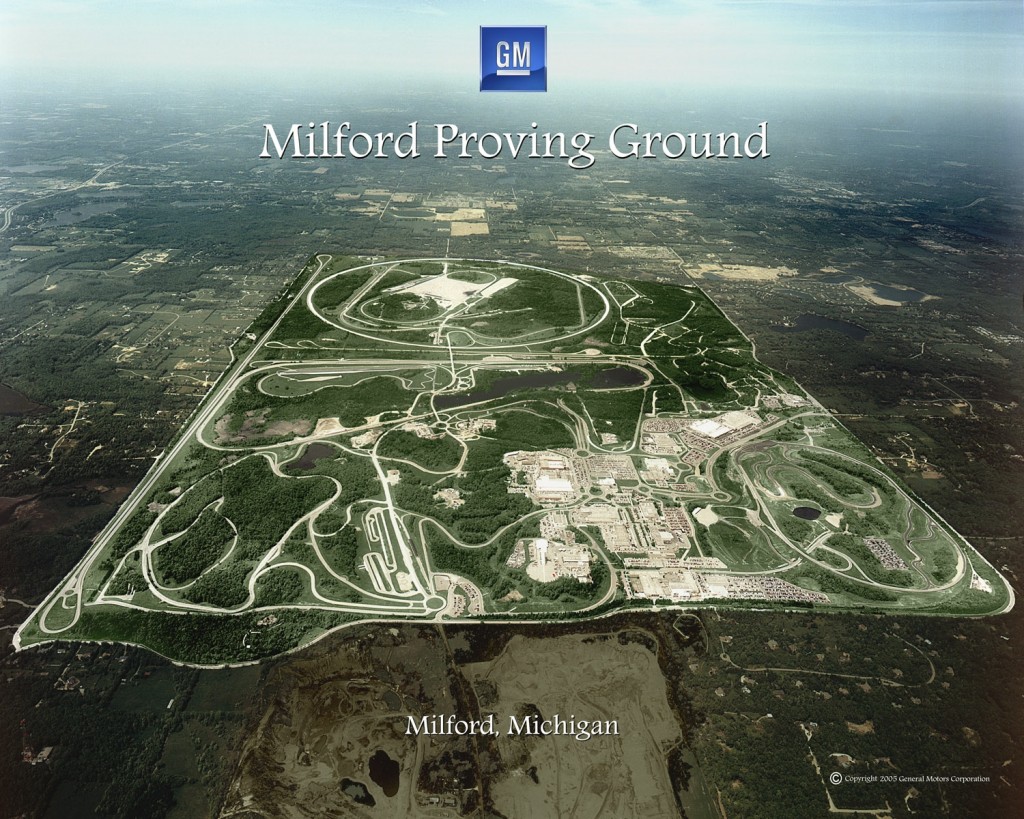
The fact-finding mission also served to break the ice, and GM agreed to sponsor the transportation pavilion in 1977 (making them the first EPCOT Center sponsor to sign on the dotted line).
That was no accident. Despite Disney’s great success with their four World’s Fair attractions back in 1964, their four rides had been second, third, fourth, and fifth in terms of popularity. Number one was General Motors’ Futurama. And GM, for its part, was eager to partner with Disney to lock its two competitors out of the brand new EPCOT Center entirely.
“Disney” Designs

Inspired by their visit to the proving grounds in Michigan, Imagineers toyed briefly with the idea of basing a transportation ride on the surprising and rigorous tests that new vehicles were put through. The idea fell by the wayside as EPCOT Center’s dark rides formed, and a team was brought in to create a compelling historical attraction.
Disney Legend and famed Imagineer Claude Coats (fabled animator from Snow White and the Seven Dwarfs on, and an essential designer for fellow Lost Legends: Mr. Toad’s Wild Ride, Snow White’s Scary Adventures, Adventure Thru Inner Space, 20,000 Leagues Under the Sea, and Horizons) cooked up an initial draft of a transportation ride for GM and presented it to the sponsors around 1978 following in the optimistic-but-grounded vein of Future World’s other classics.
As the story goes, GM’s representatives found the plans quality, but resported that the proposed attraction was lacking in charm and humor, and they requested that designers come up with something “a little more ‘Disney.’”
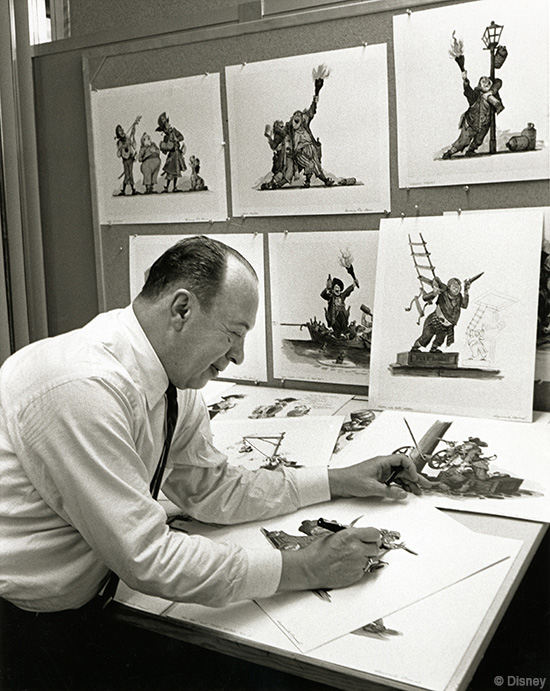
So designers made a call to recently retired Imagineer Marc Davis (left, one of Disney’s “Nine Old Men,” the original core animators on Walt’s earliest cartoons) who was just a few months into retirement. Marc’s career at WED began when he was asked by Walt himself to look over the rides at Disneyland with his animator’s eye. Those early observations led to reimaginings of the Jungle Cruise and its Frontierland equivalent, the Lost Legend: Mine Train Through Nature’s Wonderland, each becoming infused with the sensational animator’s character design and humorous vignettes. (Think of the Jungle Cruise scenes best loved today… the trapped safari; the elephant bathing pool; the gorilla encampment… both veered from photorealistic scenes of the past to humorous and stylized scenes perfectly encapsulating Marc’s style.)
In fact, it’s because of his early successes at Disneyland that Marc was personally selected to compose the scenes on that Ford Magic Skyway attraction at the World’s Fair! He’d also design the characters in both of the Modern Marvels: The Enchanted Tiki Room and the Country Bear Jamboree; the character-infused second-halves of Pirates of the Caribbean and the Haunted Mansion, and the legendary Possibilitylands: The Western River Expedition and Enchanted Snow Palace. Phew!
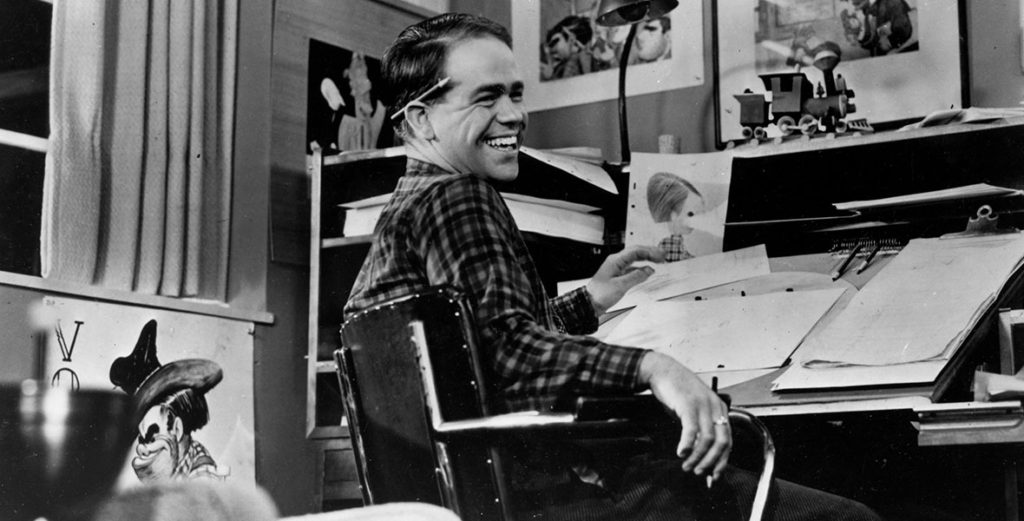
Add to the mix another prolific Disney figure: Ward Kimball. Another of the “Nine Old Men,” Kimball was a leading animator responsible for the creation of many of Disney’s most prolific creations, from Jiminy Cricket to Dumbo. While much of the credit for World of Motion’s humor and character went to Davis, it was really Kimball who got the ride “moving,” shepherding the ride from concept design to installation and execution. World of Motion is thought to be the only attraction Kimball ever worked on!
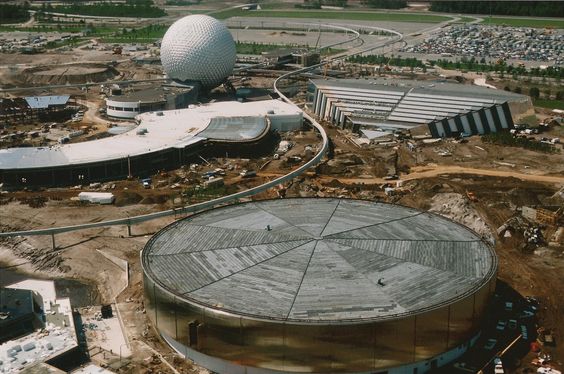
By May of 1982, construction on the ride was nearing completion. The World of Motion pavilion was a behemoth… a perfectly circular showbuilding 55-feet high with a 320-foot diameter. Inside, a 1750-foot-long Omnimover ride system (the same style used in many of EPCOT Center’s originals after debuting on Disneyland’s Adventure Thru Inner Space and, later, the Haunted Mansion) would carry more than 3,000 riders per hour through an epic 14 minute dark ride. To top off the ride’s staggering statistics, its 35 scenes contained a reported 130 animatronics, besting even Pirates of the Caribbean’s animatronic cast count.
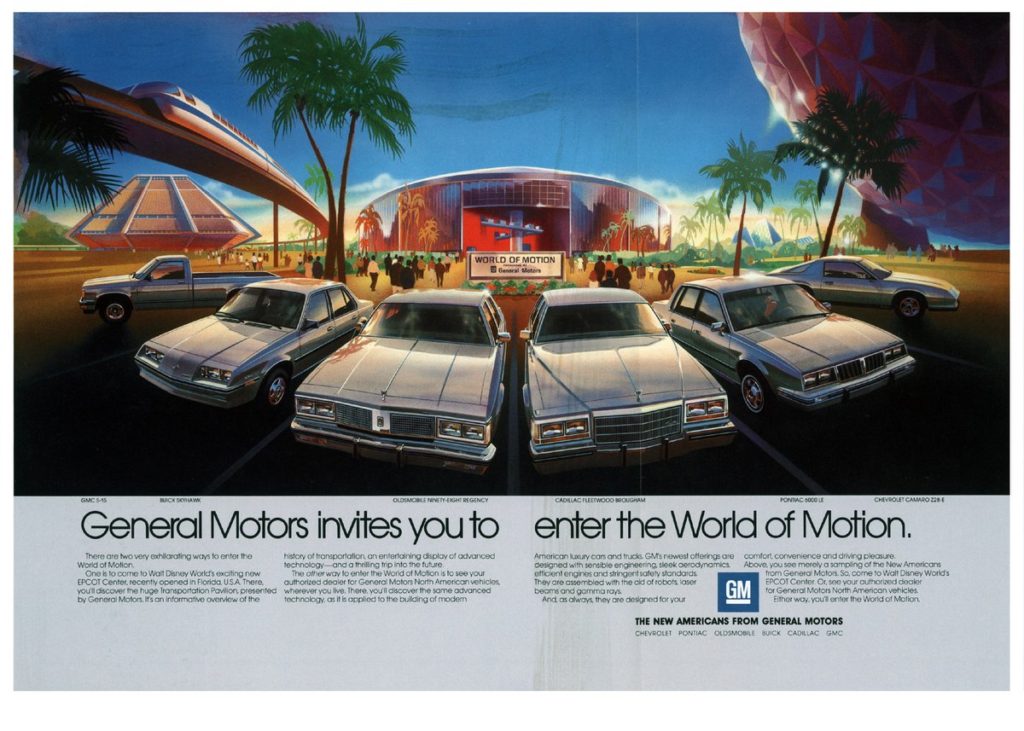
World of Motion opened with EPCOT Center on October 1, 1982. What exactly waited within this uniquely entertaining original? We’ll have a seat and ride through the ages beginning on the next page… Read on…



With the recent news about Test Track 3, will we be getting a History in Motion part 3? Looking forward to it!